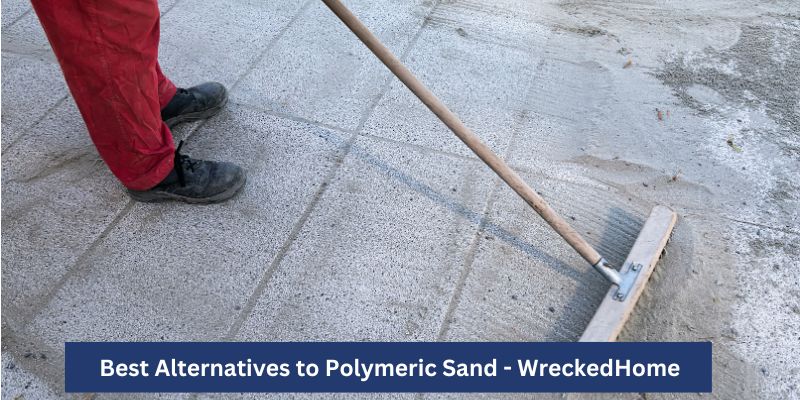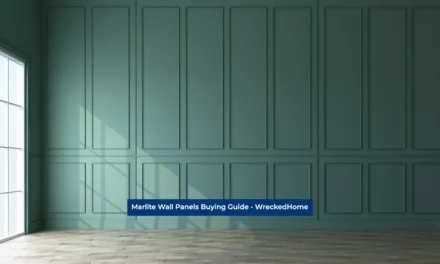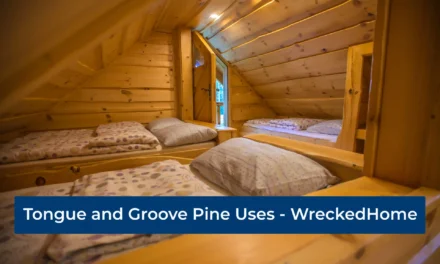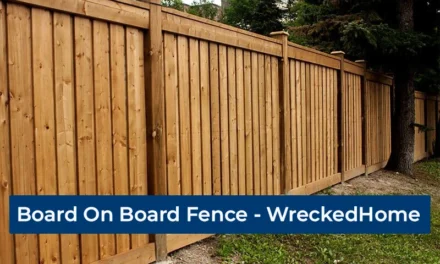You are going to do some landscaping projects at your property, but you don’t know which type of building material you should use for your project!
After doing some thinking, you decided on a polymeric sand alternative. It is versatile, durable, and best for your project. But, you are unable to find it in the market. Now, what will you do?
Don’t worry! Wrecked Home’s experts are at your service. We are going to tell you some great alternatives to polymeric sand which you can use in your landscaping projects.
So, without wasting any time, let’s delve into the details of polymeric sand alternatives.
Best 9 Polymeric Sand’s Alternatives
We are going to tell you the nine best alternatives. We will discuss where you can use these polymeric sand alternatives and what are their pros and cons. So, let’s start the discussion.
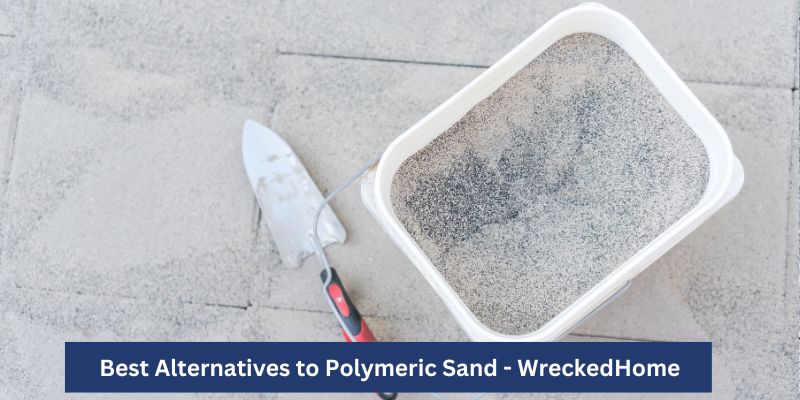
1. Cement: Polymeric Sand Alternative
Cement is an inexpensive, durable, and reliable alternative to polymeric sand. It is the most long-lasting substitute as it doesn’t erode easily.
We prefer cement because it is sturdy, and can repair cracks and fill joints. But, it doesn’t provide as good weed-prevention qualities as polymeric sand can give.
You should only use cement where there is traffic. For example, you can use it on driveways and pavements. It is only best for big projects. This means you can’t use it on your pool deck or patio.
The negative aspect of cement is it is a bit tricky to apply it. What you have to do is to create a layer of cement and then put pavers on it. Once pavers are in their place, you can’t readjust them easily. So, you must be careful while setting the pavers on cement.
We recommend that you get professional help with it because you have to set the paver correctly in your first attempt. If they are not, you can’t make changes to your project. It is one of the negative aspects of cement.
Another negative aspect is when cement erodes, you can’t simply pour more cement in its place. You have to do the whole work again when your first layer of cement erodes.
2. Plain Sand: Polymeric Sand Alternative
Plain Sand, also known as joint sand, is a cost-effective and easily available alternative to polymeric sand.
You can use it as a base for paving stones, bricks, and concrete blocks. You can also use it to fill joints between pavers.
The best part is you don’t need any professional help for applying the plain sand.
It is superior to polymeric sand because it resists erosion better than it, and allows appropriate drainage. Moreover, this sand gives a natural appearance to your pavement, and it is easy to maintain.
But, it doesn’t have as great binding abilities as polymeric sand has. So, you can’t use it in those places where there is heavy traffic.
Also, you will not get color choices in it. So, you have to compromise on the plain, tan color of it. Moreover, it erodes frequently so you have to re-do the whole task after every three to four years.
3. Builder’s Sand: Polymeric Sand Alternative
Builder’s Sand, also known as coarse sand, is another great Polymeric Sand Alternative.
The best part of this sand is you can adjust it even after watering it. Unlike polymeric, it doesn’t harden after getting water. Moreover, it is affordable.
It is free from chemicals too so for those who are looking for an eco-friendly option, this sand is best for them. It is easily available in the market. Moreover, its strength and durability match polymeric sand. So, it can be used in different big construction projects.
But, just like any other construction material, this sand also has a few drawbacks.
The first one is its erosion issue. This sand is prone to erosion as it has large grain particles. So they can wash away due to heavy rainfalls and winds. So, you should check on it after any disastrous weather.
The second issue with this sand is it attracts different insects. Ants will come near to this sand, so your pavement can be full of them.
Also, weeds can grow easily in this sand. A lot of people don’t think of it as an issue because plants can help in tackling erosion. But, your pavement will be full of different small plants. So, you may need to pull them out from time to time.
4. Stone Dust
You can also use stone dust in place of polymeric sand. It is the byproduct of crushed stone and is also known as quarry dust. It is an eco-friendly and cost-effective construction material.
This sand can be used to fill the cracks and as a base for your pathways and patios.
It has some of the great qualities which make it better than the polymeric sand. These are better drainage, weed growth prevention, and easy application.
You can apply this dust in wet conditions too. Moreover, this sand doesn’t let water seep into it. It means that water will never seep underneath your patio or paver. Also, it will never allow water to sit around your home.
This sand also has some negative aspects. The first one is erosion. This sand can easily erode so you need to add multiple layers of it underneath your pavers.
Moreover, it is not as strong and durable as polymeric sand. You should keep this fact in mind too.
5. White Washed Sand
Personally, we recommend white washed sand to our readers because it is almost the same as polymeric sand. So, you should buy white washed sand without any second thought.
We found this sand way better than polymeric due to different reasons. The first one is that it is easily available. Also, you don’t need any professional help to apply this sand.
Also, this sand is durable so it can withstand harsh weather. It also prevents weed growth.
But, there are a few negative aspects of this sand too. The first one is that it is expensive. Also, this sand tends to erode more quickly than the polymeric sand.
6. Clear-Drying Adhesive
Clear-Drying Adhesive is the ideal option for those who want natural alternatives to polymeric sand.
This adhesive is generally used for commercial purposes. But, a lot of homeowners also prefer using it for their DIY projects.
So, you can use it to bind your pavers securely. It has long-lasting binding powers so it will not erode easily. It means your pavement will remain in its place for a long time.
But, this adhesive material is not easy to find. Moreover, it is way more expensive than polymeric. You also have to reapply it from time to time for better results.
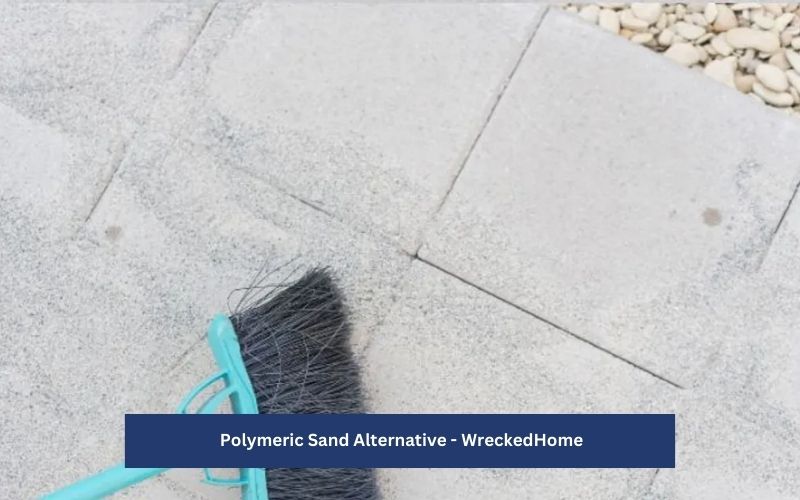
7. Joint Stabilizing Sealer
You can use joint stabilizing sealer in place of polymeric sand. You can use a brush or spray to apply it in the gaps of pavers.
The positive aspects of this sealer are its ease of application, preventing weeds, and inhibiting sand erosion. It also prevents insect infestation and can endure extreme weather conditions.
It will not vanish easily so you don’t need to worry about it. Also, you can reapply it easily to refresh the stabilizing effect.
But, it does have some drawbacks too. This sealer doesn’t have the same strength and durability that polymeric sand has. It is also not best for bright-colored pavements.
Because, it can darken or change the appearance of your pavers, impacting the beauty of. So, you should use it for natural-looking surfaces only.
Visit our store for 10% off our Cleaning Products here.
8. Mason Sand
Mason’s sand, also known as masonry or mortar sand, can also be used when you don’t have polymeric sand.
A lot of people confuse Mason sand with whitewashed and concrete sand because of its appearance. But, it is a different type of sand that can be used for various purposes.
It can be used as a base material for pavers and stepping stones. Moreover, you can use it for projects where you want aesthetic beauty. Its fine grains give an aesthetic presence to your place.
The best thing about this sand is it is cost-effective. Also, it has longevity and durability which makes it ideal for landscaping projects. It can endure harsh weather more easily than polymeric sand.
But, you need to check this sand from time to time. It can erode easily so you need to keep an eye on it.
9. Washed Concrete Sand
Washed Concrete sand, also known as bedding sand, can be used for paving purposes. It is not the best alternative to polymeric sand, but you can still use it if nothing is available.
It is used for leveling driveways and patios. You can find it easily in the market. Moreover, it is easy to apply.
But, don’t expect much from it in terms of longevity. It will erode swiftly. Moreover, it has large particles which will not settle down into your pavers. So, it can erode your pavement in the long run.
These are the nine best alternatives to polymeric sand. But, how can you decide which one is best for you? Well, let us answer this question.
Which Polymeric Sand Alternative is Best for You?
Our opinion is plain sand and whitewashed sand is the best alternative. Because they have qualities that are near to polymeric sand, and they are easy to apply.
But, you need to think of various aspects before choosing any alternative. These aspects are budget, weather conditions in your area, and for which type of project you want the sand.
After that, select any alternative.
For any repairs, installations, builds, or questions; We recommend you to hire a professional. Find A Pro Near You Here!

